Physics - Alternating Current
1/17
There's no tags or description
Looks like no tags are added yet.
Name | Mastery | Learn | Test | Matching | Spaced |
|---|
No study sessions yet.
18 Terms
Alternating Current
It is one for which the magnitude and direction of current changes continuously with time.
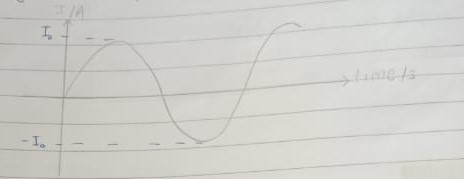
Time Period (T)
Time period of an AC cycle, representing the duration of one complete cycle of the waveform.
Frequency (f)
f = 1/T, where f is the frequency and T is the time period
Angular Frequency, w
Rate of change of current or voltage
w = (2π)/T , where T is the time period
w = 2πf, where f is the frequency
Peak Current
The Amplitude of the graph
I = I₀ x sin wt, where I₀ is the peak current, w is 2πf or (2π)/T (f is the frequency and T is the time period), t is the time period and I is the current
Peak Voltage
V = V₀ x sin wt, where V is the voltage, V₀ is the peak voltage, w is 2πf or (2π)/T (f is the frequency and T is the time period), and t is the time period
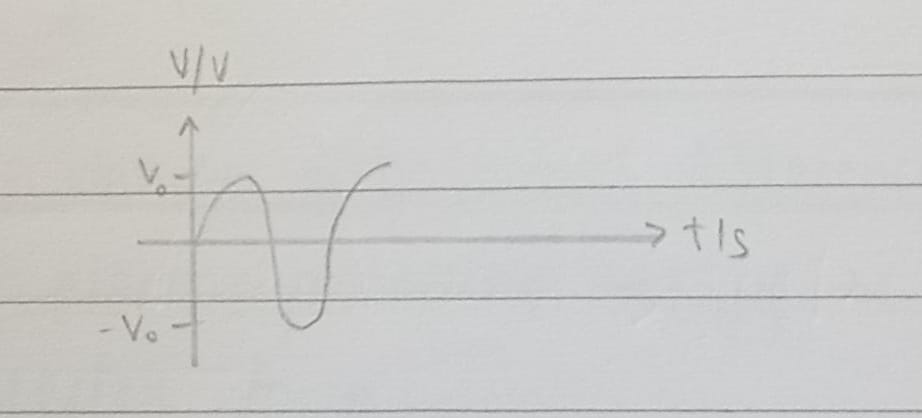
Power
P = (I₀)² x R x sin² wt, where P is power, I₀ is peak current, R is resistance, w is 2πf or (2π)/T (f is the frequency and T is the time period), and t is the time period
P = IV , where P is power, I is current, and V is voltage
P = I₀V₀, where P is power, I₀ is peak current and V₀ is peak voltage
P = I²R, where P is power, I is current, and R is resistance
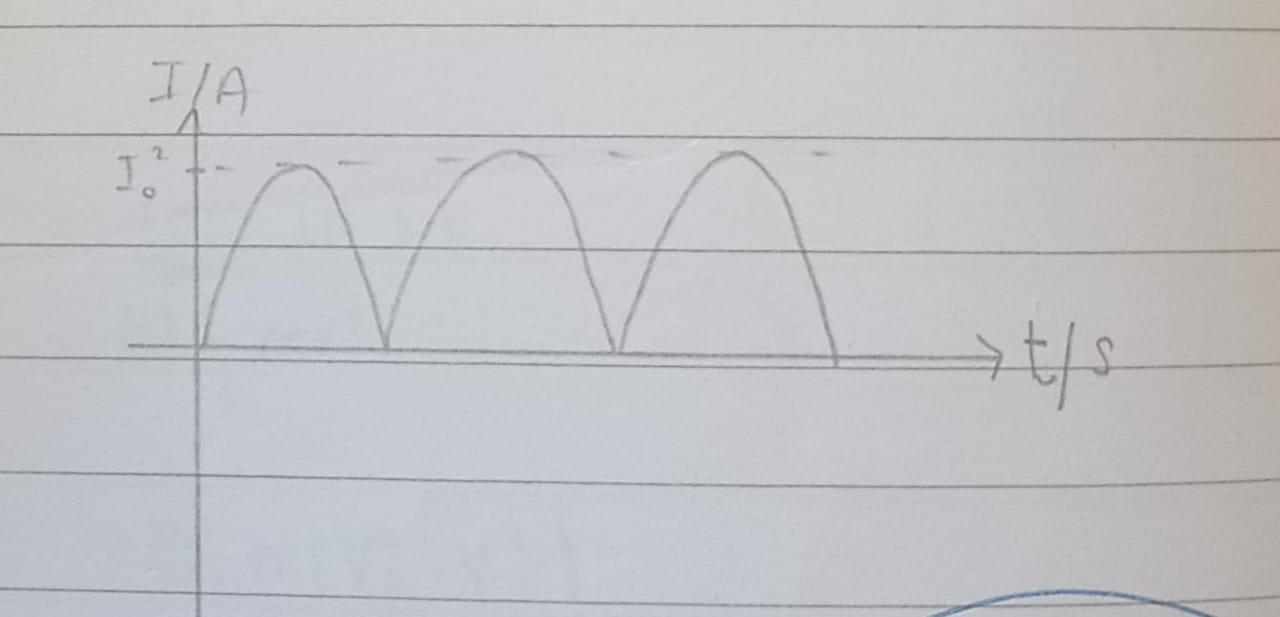
Maximum Power
Pₘₐₓ = (I₀)²R, Pₘₐₓ is maximum power, I₀ is peak current, and R is resistance
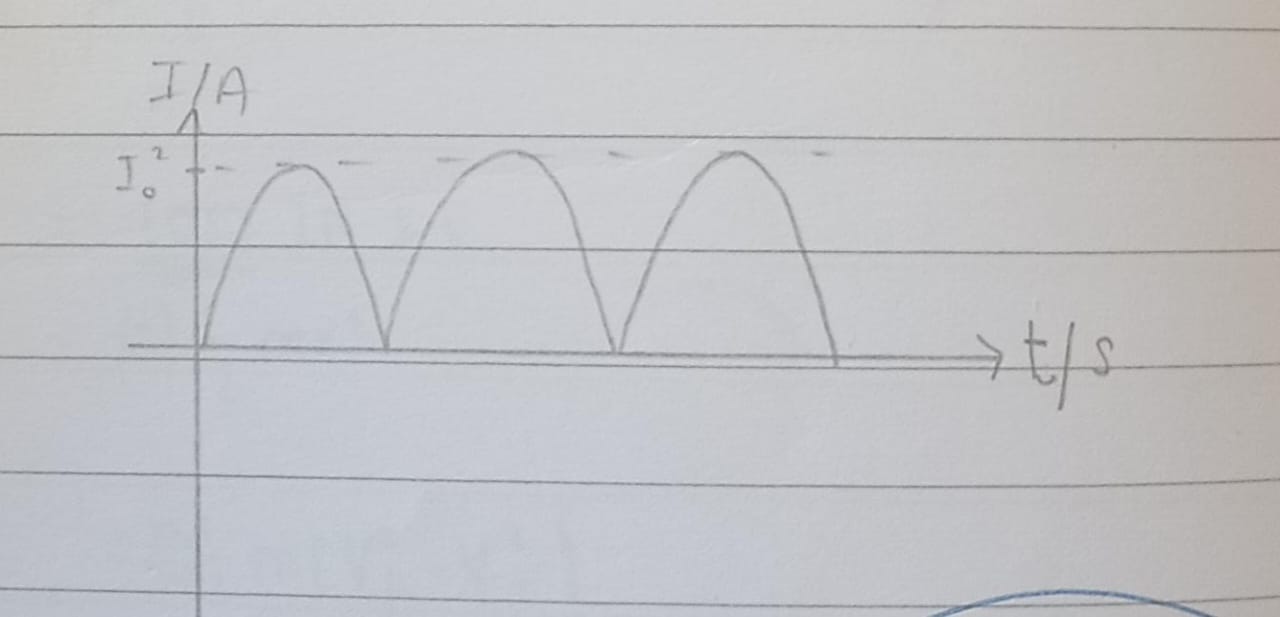
Minimum Power
Pₘᵢₙ = 0, where Pₘᵢₙ is minimum power
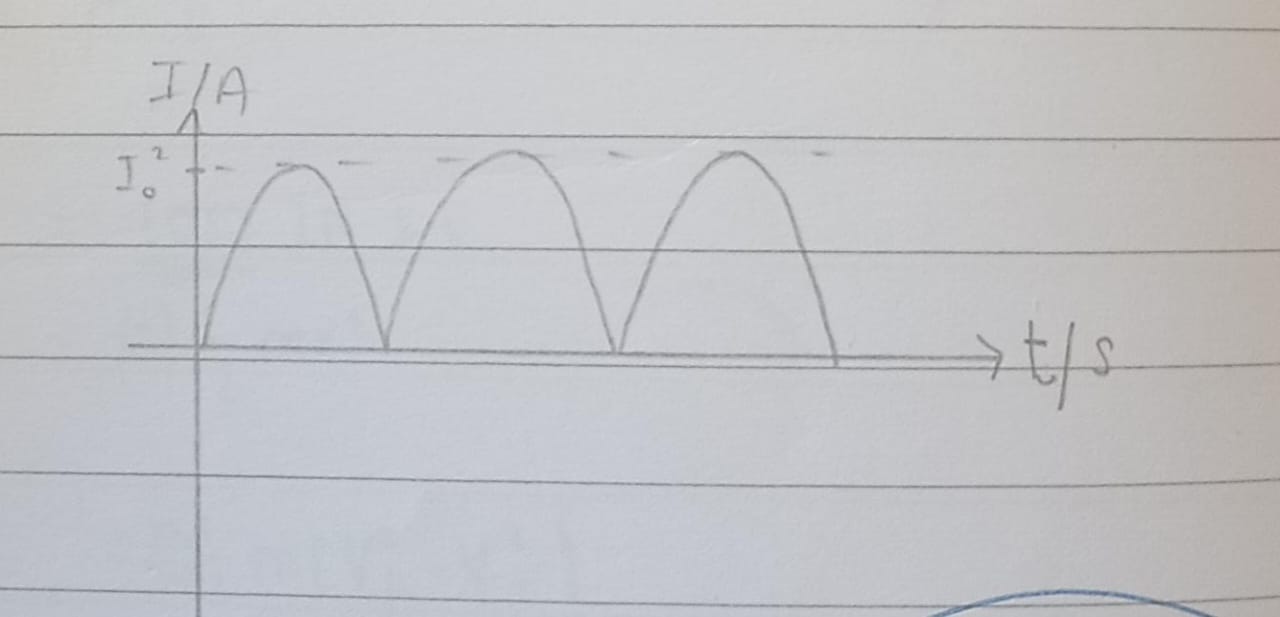
Mean Power
Pmean = ½ Pₘₐₓ, where Pₘₐₓ is the maxiumum power, and Pmean is the mean power
Pmean = ½ x (I₀ )² x R, where I₀ is peak current, R is resistance, and Pmean is the mean power
Pmean = ½ x I0 x V0, where Pmean is the mean power, I0 is the peak current, and V0 is the peak voltage
Pmean = Vrms x Irms, where Pmean is the mean power, Vrms is the root mean squared voltage, and Irms is the root mean squared current
Iₘₛ (Mean Squared)
Iₘₛ = ( ½ x (I₀)2), where Ims is the mean current squared and I0 is the peak current
Irms (Root Mean Squared)
The value of the direct current corresponding to an alternating one that gives the same mean power output as an alternating current would.
Irms = Io x √(2), where I0 is the peak current
Vrms (Root Mean Squared)
The value of the direct voltage corresponding to an alternating one that gives the same mean power as an alternating voltage would
Vrms = V0 x √(2), where V0 is the peak voltage
Half-Wave Rectification graph
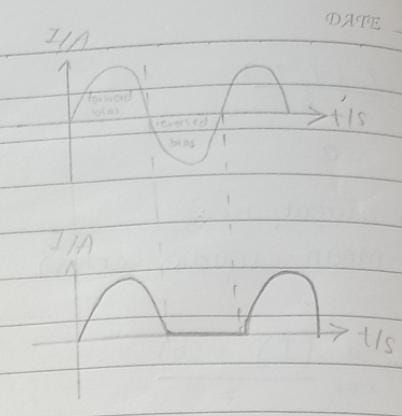
Full-Wave rectification graph
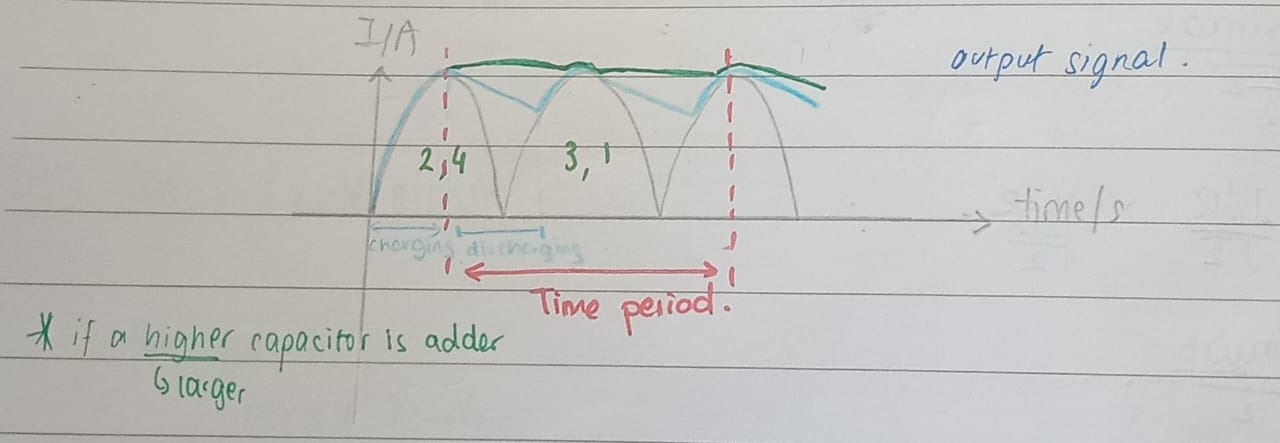
Use of single diode for a half-wave rectification of an alternating current
A single diode converts only one half-cycle of AC into pulsating DC. It acts as a one-way valve, letting current flow during one half-cycle and blocking it during the other. This 'chops off' half of the AC waveform, creating a pulsed DC output
Use of the bridge rectifier (four diodes) for the full-wave rectification of an alternating current
A bridge rectifier uses four diodes to convert a full cycle of AC into pulsating DC. It achieves this by guiding the current to always flow in the same direction through the load, regardless of the AC input's polarity. This method utilizes both halves of the AC waveform, making it more efficient than half-wave rectification.
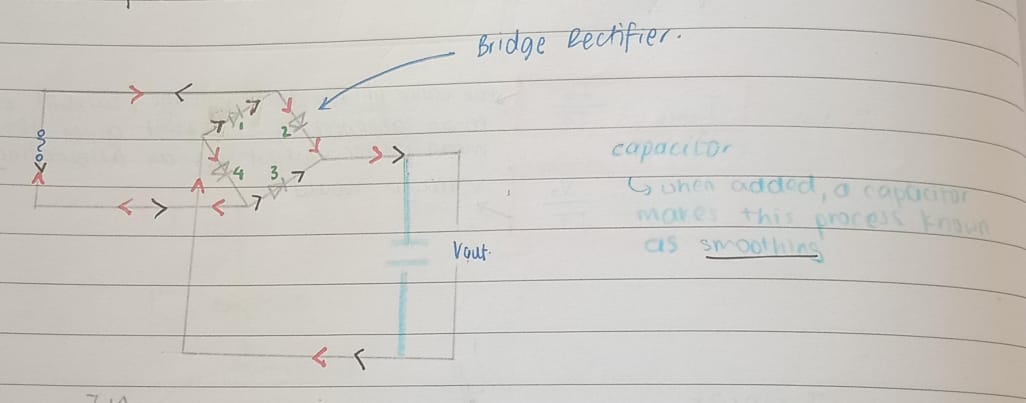
Smoothing
To decrease the drop in the output voltage, a capacitor is attach in parallel to the Vout. Adding a capacitor increases the mean output voltage and hence also increases the mean output voltage.